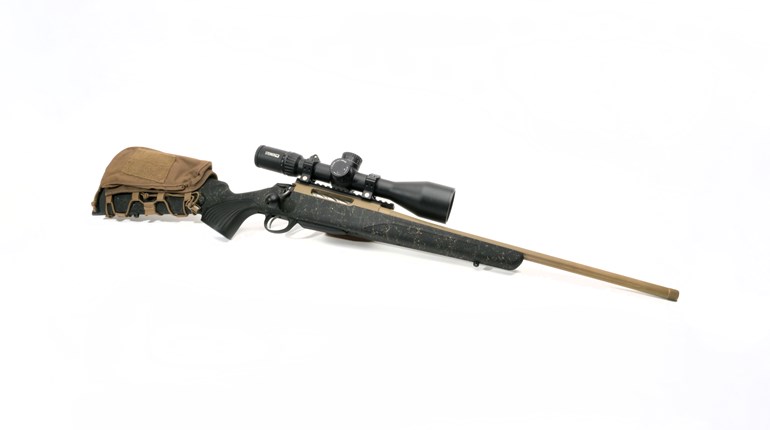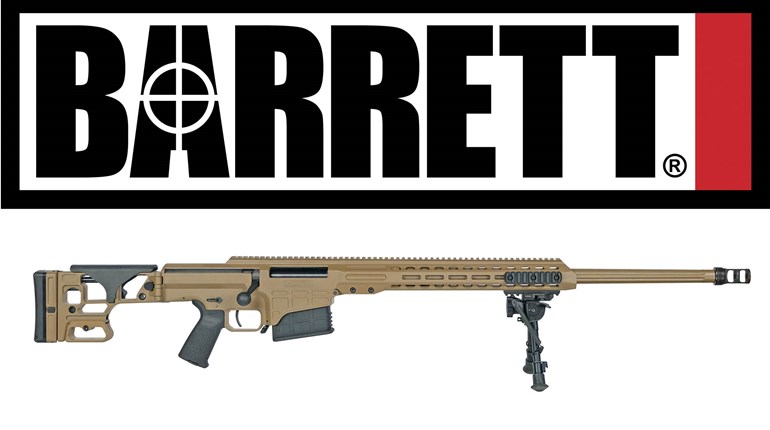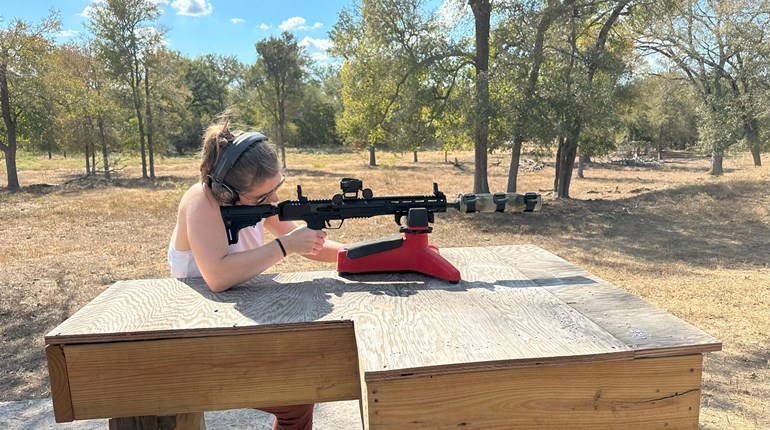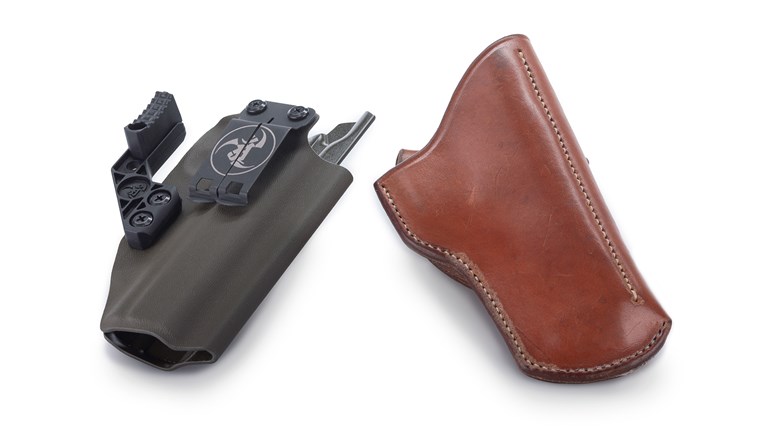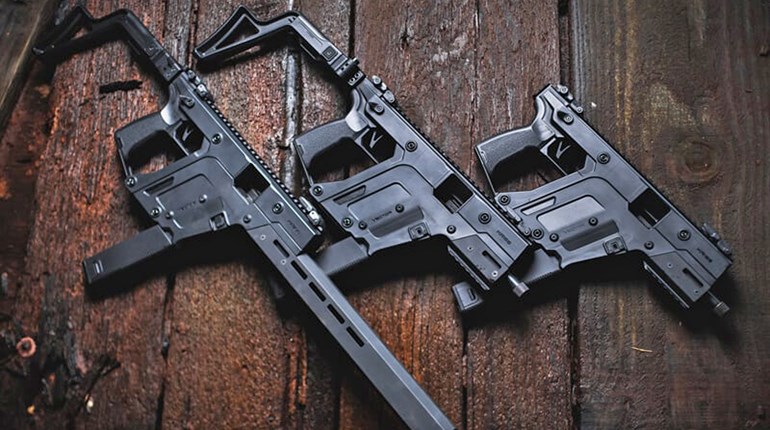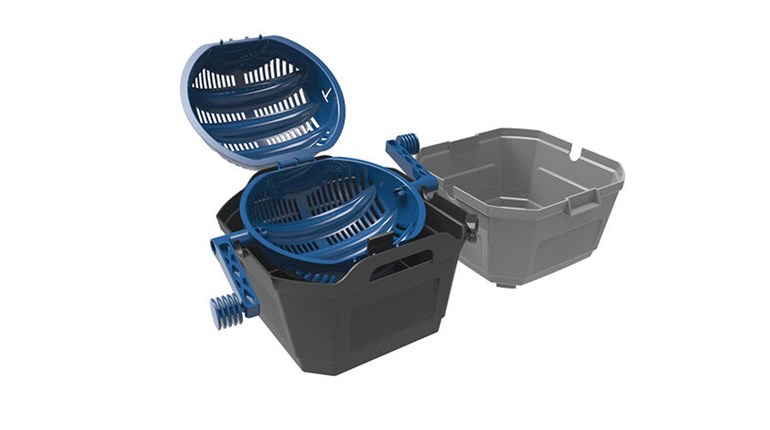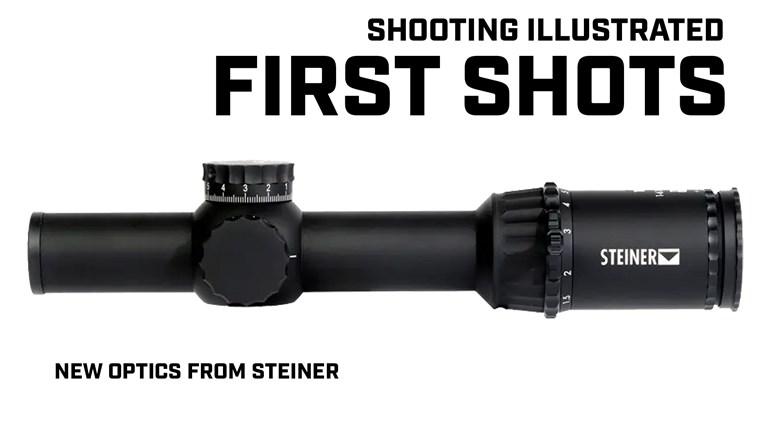
Austin Precision Products is not exactly a household name in the shooting industry. However the company's more-familiar brand—LaRue Tactical—is well known in military, law enforcement, competition and basement-commando circles. Wear a LaRue hat for a few days, and you'll be surprised at the diverse group of folks familiar with the name. I've had store clerks, doctors, teachers and even a Baptist minister recognize the LaRue brand. Over the past few years, shooters have come to expect three things from the capable and patriotic folks headquartered near Austin, TX: ingenuity, quality and products that are backed to the ends of the Earth.
Like many military snipers, I became familiar with Mark LaRue's work in the mid 1990s through his company's Upchuck self-resetting targets. They made the cumbersome task of setting up steel for unknown-distance field shooting worth the pain of the inevitably bruised shins and smashed fingers. Few shooters will complain about watching a hunk of freshly shot steel drop like a rock, then slowly rise, ready for more copper-jacketed lead thrashings.
Several years ago, the U.S. Department of Defense became aware of lightweight, durable, tactical riflescope rings made by LaRue. Previously, only steel rings had been made to stand up to the rigors of combat while remaining reasonably sized. Steel is heavy. Heavy sucks when you live on your feet and survive by remaining mobile. The lucky recipients of LaRue's rings were impressed with their sleek profile, high strength and requisite light weight. Several years and untold combat operations later, LaRue Tactical is a permanent fixture on the armaments map, with products ranging from simple mounting bases to complete rifles.
When I heard LaRue was gearing up to build a 7.62 NATO sniper-grade rifle based on its 5.56 NATO platform, I began laying the groundwork to test one. Many firearm manufacturers hold back sample rifles from first production runs to ensure writers get to evaluate them. True to the company's very dedicated missions to get a product right before releasing for sale and to ensure military and LE needs are taken care of first, LaRue's new Optimized Battle Rifle (OBR) didn't exactly jump into writers' hands overnight. That was OK with me—I'll wait as long as need be to ensure the folks laying their lives on the line get what they need before I ever see a sample.
My test rifle finally arrived in June 2010 in a padded hard case, complete with two of LaRue's excellent 20-round magazines. I've already written about the high quality and reliability of these mags, and they continue to have an excellent track record with all .308 Win. ARs into which I feed them. One unique OBR mag feature is a nifty (and patent-pending) modification that aids in feeding. Anyone who has unloaded high-capacity rifle magazines by hand knows it's a pain and the larger the cartridge, the bigger the pain. AR .308 Win. mags have a nasty habit of grabbing cartridge rims in several places along the way as rounds are pushed forward, such as when feeding or stripping by hand. As near as I can tell, this is caused by the vertical ribs stamped into the magazine body.
Where a numbskull like me considers this a nuisance, a smart guy like LaRue knew this also somewhat retards cartridge feeding. His solution is a horizontal bridge between the two rearmost ribs at the top of the magazine, and the result is a much smoother feed and strip.
My sample gun wore an 18-inch barrel, although 16.1- and 20-inch variants are available. LaRue offers many OBR furniture options, mostly from Magpul. Mine arrived with a standard A2 stock and grip. Shooters familiar with LaRue products know it doesn't build anything with light duty in mind. The OBR remains true to this mindset—robust, rugged and yet very comfortable in hand. The free-floated fore-end is bolted to the company's proprietary upper receiver, creating an ultra-rigid mounting platform that includes a continuous top rail running the length of the handguard. The rail has 20 MOA of slope built in to preserve enough adjustment to allow dialing in long ranges when using optics with limited internal elevation movement. The tube's gripping surfaces are sleek and smooth. So smooth, the non-railed area refused to accept an adhesive hook-and-loop fastener when I tried to mount an ATPIAL tape switch. It wasn't my rifle, so the usual blob of contact cement wasn't an option.
Unlike most free-floated barrels, side rails are limited to a 3-inch section, located toward the front at the 3- and 9-o'clock positions. This makes sense to me, as most lights and lasers tend to be mounted forward, but some shooters may find it limits their options. Threaded holes along the bottom allow add-on modular rails with a 3-inch rail coming standard at the 6-o'clock position. The upper receiver has an ejection-port cover and integral brass deflector, but does not have a forward-assist assembly.
The gas block incorporates LaRue's Port Selector Technology; using an easily adjustable, two-position regulator that allows normal gas flow for unsuppressed firing and a restricted setting for suppressor use. I'm a big believer in adjustable gas regulators. LaRue's rifle uses an ingenious system to adjust gas flow. Instead of the usual method of opening or closing the gas pathway by impeding it with a screw or plug, the OBR has two gas ports. Setting the regulator to the left position opens both ports for unsuppressed firing while the right position closes one of the ports.
A very stout PRI M84 Gas Buster charging handle ensured easy manipulation of the chrome-plated bolt-carrier group, while directing some of the receiver gasses away from my face. The OBR's stainless steel firing pin incorporates a captive spring, preventing firing pin/primer contact when a round is chambered or in the event of a hard impact at the muzzle.
Both receivers are CNC machined from 7075-T6 billet; the latter incorporating an integral trigger guard large enough to permit the use of gloves. Both the bolt and magazine releases are semi-shrouded to prevent inadvertent activation. The magazine well accepts Knight's Armament, DPMS, Remington, Magpul, C Products and Brownells standard .308 Win. AR magazines.
I have never fired, tested, built or come into contact with an AR that has the OBR's tight tolerances. The upper receiver tang doesn't just fit into the lower's rear tang slot, it mates with it. The rifle's halves were harder to get apart than a pair of barnyard goats. In the gun world, that sort of fit is a good thing, on the farm…not so much.
Range Work
My initial firing impression of the OBR was it was a bit jumpy on the front end when fired prone. I attribute this partially to its light-for-caliber overall weight, as well as the SureFire FH762 flash hider/suppressor adapter. SureFire's muzzle device tames flash effectively and helps manage recoil to a small degree. But it really shines in terms of both flash and recoil control when mated to a suppressor. For non-tactical shooters who prefer betterbraking, but do not want the hassle of more ATF paperwork, the 5⁄8-24 threads of the OBR's muzzle permit mounting a dedicated muzzle brake. I mounted a SureFire Scout light with a KM2 IR lens and an M93 throw-lever mount with an Insight Technology ATPIAL IR aiming laser on the front rails before assuming a good bipod-supported prone position. The Geissele Automatics Super Semi-Automatic, two-stage match trigger measured in at 2.5 pounds for the first stage and 2 pounds for the second stage, allowing a smooth pull and clean break for each shot.
Once I settled into the gun, the shooting session went very smoothly. The rifling's slower rate of twist preferred lighter projectiles in the 150- to 168-grain range. The test target that accompanied my rifle showed a .735-inch five-shot group using Federal 168-grain ammo. My results largely mirrored this target, with averages slightly higher, but tighter groups with three out of the four loads tested. LaRue guarantees the OBR will shoot less than 1 MOA, and my test sample certainly exceeded that goal. Overall, I put 205 rounds through the rifle with no hiccups. The machined, free-float tube remained cool throughout the test, in spite of the Carolina heat.
LaRue Tactical has turned out a well-engineered, finely crafted implement. The OBR will fit into several categories, depending on barrel and stock configuration. Whether intended as a carbine-length battle rifle, a designated marksman platform, a hunting partner or a long-range tool, LaRue's .308 ought to hold up its end of the bargain in terms of accuracy and reliability. Knowing the quality of this company's work, I feel safe in predicting anyone in possession of an OBR can count on handing it down for generations.
Manufacturer: LaRue Tactical; (512) 259-1585
Caliber: 7.62 NATO
Action Type: Semi-automatic, direct-gas-impingement system
Capacity: 10 or 20 rounds
Barrel: 16.1 inches, 18 inches (tested) and 20 inches; LW50 blackened steel
Sights: None; continuous Picatinny rail for mounting optics
Rifling: 4 grooves; 1:11.25-inch RH twist
Stock: A2-style buttstock and pistol grip (tested), numerous other options
Trigger Pull: Two-stage; 2.5 pounds first stage; 2 pounds second stage
Overall Length: 37.5 inches
Weight: 9 pounds, 11 ounces
Accessories: Two, 20-round magazines, hard case
MSRP: $2,995 (with A2 flash hider)












